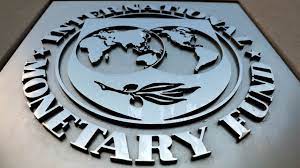F.P. Report
Washington, DC: The Executive Board of the International Monetary Fund (IMF) approved a EUR 2.4 billion (or the equivalent of 290 percent of quota and SDR 1.89892 billion) SBA yesterday for the Republic of Serbia. The SBA provides support for the authorities’ economic policies over the next two years. The Board’s decision makes approximately EUR 1 billion (120 percent of quota and SDR 785.76 million) available immediately, which the authorities intend to purchase. Future purchases become available upon completion of semi-annual reviews. The authorities intend to make further purchases in 2023, while treating the 2024 amounts as precautionary.
The Executive Board of the IMF also concluded the third review under the PCI [1] for the Republic of Serbia. The PCI was approved on June 18, 2021 and aimed at: supporting the recovery from the Covid pandemic, maintaining macroeconomic stability, and anchoring the medium-term fiscal policy framework, while pushing ahead with structural reforms to deliver more inclusive and sustainable growth. The SBA will replace the existing PCI and build on the PCI reform agenda with appropriate modifications for recent policy challenges.
The authorities’ program supported by the SBA takes forward the policies already pursued under the PCI, while incorporating additional actions to address the energy crisis and
increase buffers amidst high uncertainty. Policies seek to address actual and potential external and fiscal financing needs, maintain macroeconomic and financial stability, and continue to strengthen the economy’s performance and resilience through structural reforms, with a special focus on the energy sector.
At the conclusion of the Board discussion on the Republic of Serbia, Mrs. Gita Gopinath, First Deputy Managing Director, made the following statement:
“Serbia has built a strong track record of solid macroeconomic performance, supported by the IMF under the Policy Coordination Instrument (PCI). However, with high energy prices, a longer timeline to fully restore domestic electricity production, high inflation, and lower trading partner growth, the current account and the outlook for economic growth have weakened while additional fiscal financing needs have emerged. The authorities have preserved macro-financial stability and have already put policies in place to mitigate these shocks. Amid high uncertainty, they seek to build additional buffers supported by a Stand-by Arrangement.
Taking forward the policies under the PCI, the authorities are rightly containing the fiscal deficit while providing temporary support to the state-owned energy companies. Gradually raising Serbia’s comparatively low domestic energy tariffs while protecting the most vulnerable will be important for restoring cost recovery over the medium term, eliminating the fiscal drain, and encouraging energy conservation. The new fiscal rules will provide an important anchor for medium-term fiscal discipline.
Reforms of the energy sector are a high priority. The planned reform strategy for power company EPS, a prioritized sectoral investment plan, and a new Energy Development Strategy will help guide these reforms in both the public and the private sectors.
Amid ongoing global and domestic inflationary pressures, monetary policy has rightly continued to be tightened. The National Bank of Serbia’s vigilance in ensuring price stability will be key to curbing inflation expectations and bringing inflation back within the inflation band.
Additional structural reform commitments, including on fiscal management and governance of state-owned enterprises, aimed at underpinning medium-term growth are also important.”
Annex
Recent Economic Developments
Serbia’s economy rebounded quickly from the Covid pandemic, and the authorities embarked on a well-paced consolidation path to rebuild buffers, supported by a program under the PCI. However, risks foreshadowed at the Second Review of the PCI have materialized: higher energy prices and domestic electricity production problems have significantly increased balance of payments and fiscal financing needs. And high global inflation, a weak outlook for trading partner growth, and ongoing spillovers from Russia’s war in Ukraine weigh on the outlook despite its still-strong macroeconomic policies.
Program Summary
The two-year SBA would help cover the external and fiscal financing needs through the coming winter stemming from elevated energy import costs and worsening global financing conditions, and maintain external buffers in an environment of high risks. Some policies include:
- Energy tariff adjustments and structural reforms to restore the financial balances of the state-owned energy utilities EPS and Srbijagas within two years, while cushioning the impact on vulnerable households and supporting the energy utilities through fiscal transfers in the short term;
- Tight monetary and fiscal policies to control inflation and provide support for the stabilized exchange rate;
- Further fiscal transparency and budget reforms to support fiscal discipline and the effective implementation of the new fiscal rule; and
- Ongoing reforms to strengthen SOE governance and oversight.







